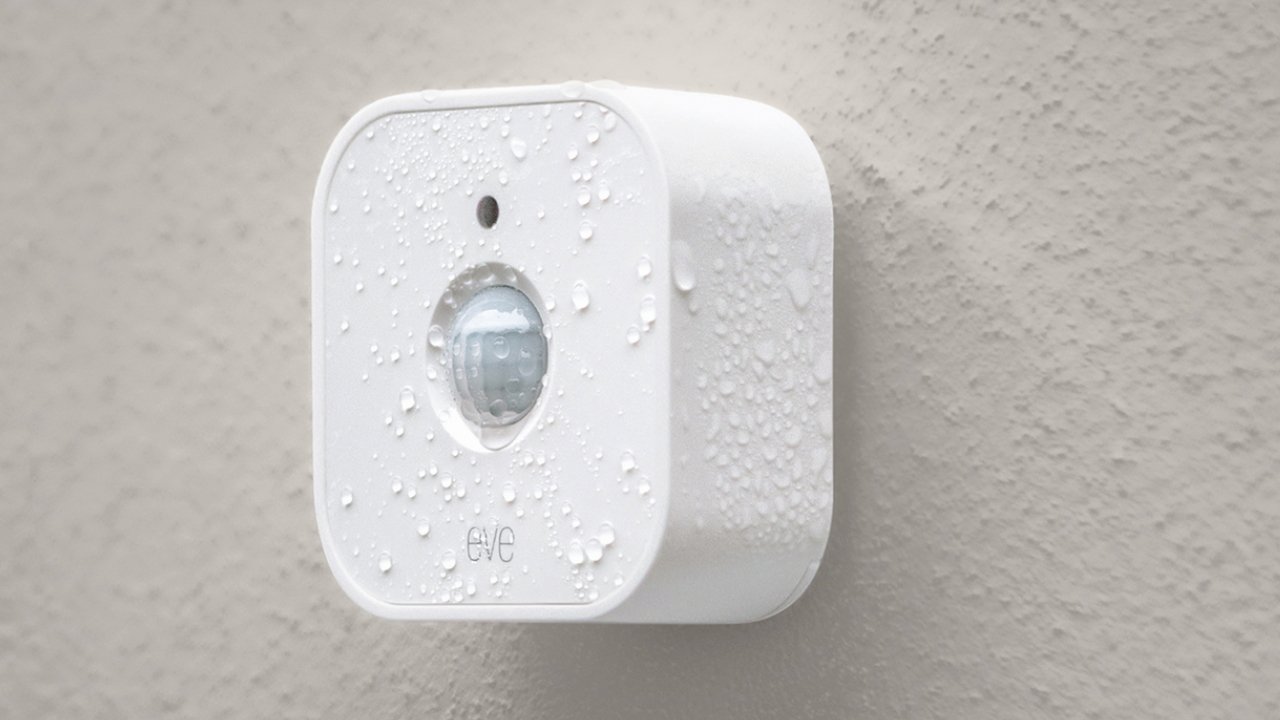Eve launches new HomeKit motion sensor with Thread, light triggers
The new second-generation Eve Motion HomeKit sensor adds Thread support, an integrated light sensor, and costs less than the previous model.

Six years after its original motion sensor was released with HomeKit support, Eve is launching an updated model to replace it. Alongside the regular motion detection of the previous model, this generation adds a luminosity sensor.
The company also says that it has aimed at future-proofing the motion sensor by adding Thread, and being ready for the new Matter smart home standard.
"We can't wait for Matter to become available in Fall 2022," said Jerome Gackel, Eve Systems CEO. "With the launch of the new model of Eve Motion we continue to deliver a wave of products prepared to shape the smart home of the future."
"Combining wireless motion and light sensors," continued Gackel, "Eve Motion is the essential tool to automate your HomeKit smart home."
The luminosity sensor allows for light-based triggers alongside motion ones. So a person entering a room in daylight might, for example, trigger a fan to turn on. But someone entering the same room at night would instead have the lights turn on.
Suitable for both indoors and outdoors, the new Eve Motion sensor has an stated 120 degrees field of view. It is powered by two AAA batteries, and connects wirelessly over Bluetooth Low Energy and Thread.
The new Eve Motion sensor costs $39.95 -- $10 lower than the previous model. It is available direct from Eve, and will shortly be available through Amazon.
Read on AppleInsider

Six years after its original motion sensor was released with HomeKit support, Eve is launching an updated model to replace it. Alongside the regular motion detection of the previous model, this generation adds a luminosity sensor.
The company also says that it has aimed at future-proofing the motion sensor by adding Thread, and being ready for the new Matter smart home standard.
"We can't wait for Matter to become available in Fall 2022," said Jerome Gackel, Eve Systems CEO. "With the launch of the new model of Eve Motion we continue to deliver a wave of products prepared to shape the smart home of the future."
"Combining wireless motion and light sensors," continued Gackel, "Eve Motion is the essential tool to automate your HomeKit smart home."
The luminosity sensor allows for light-based triggers alongside motion ones. So a person entering a room in daylight might, for example, trigger a fan to turn on. But someone entering the same room at night would instead have the lights turn on.
Suitable for both indoors and outdoors, the new Eve Motion sensor has an stated 120 degrees field of view. It is powered by two AAA batteries, and connects wirelessly over Bluetooth Low Energy and Thread.
The new Eve Motion sensor costs $39.95 -- $10 lower than the previous model. It is available direct from Eve, and will shortly be available through Amazon.
Read on AppleInsider

Comments
I need to read up on Thread capability but I don't think my Hue setup has it. Having a light trigger as well as a motion trigger adds some utility though and I've been needing at least one more motion sensor.
In fact, the article mentions that you can trigger based on lux.
And wow, I just discovered that Homekit even has an "occupancy sensor" rather than just a motion sensor for my Homekit cameras. That's new to me. I'm going to try that out.
So you are right, cameras have more functionality, but if you just want to detect motion in a hallway or something, motion sensor are good enough.
However Eve billed me 22 hours ago and I still haven't seen a notice that they have shipped it yet. I thought companies only billed after they shipped.
Tell me, is there hysteresis on the threshold to avoid re-triggering as night draws in?
I think you are asking if a light trigger could occur twice for the same event (morning, evening sunlight). That's a good question. Some people may actually want a very short reset time on the light trigger, but it sounds like you want a very long threshold. I'm not sure, but that would probably have to be a HomeKit feature, not a sensor feature. I can't test it today.
EDIT: Just reading the Eve blurb and it hints that my fears were right: But maybe I'm being pessimistic. Be interested to hear what you find when you receive yours (now they've taken your money)!
Your Nanoleaf Aurora lights are using, I presume (since you didn't state explicitly), your Nanoleaf app for the lux triggers. I refuse to use vendor apps for smart devices, I will use only Apple's Home app. So all I can test is what Apple's Home/HomeKit can perform.
The original poster didn't really say whether he wanted the solution from HomeKit or from the vendor's app. But at this point in time I plan to report only what Apple's Home app can do.
Yes, the Apple Home app allows me to set up an automation that says "when Light levels Rise above 200 lux in Bedroom"... so that an action can occur (entirely irrespective of motion detection), and as a test I've set up an action to "turn off air purifier" when the light gets bright. It's not clear to me how many times per day this action could be triggered. I'm guessing that the Home App has a minimum amount of time required before the same automation can be triggered again. I'm not yet sure what that is. Everyone has their own needs in terms of how soon a trigger can be re-triggered. Some people may want the minimum to be 24 hours, but some may want it to be 24 milliseconds. It just depends what you are trying to do. The Apple Home app doesn't seem to have any way to configure this value.